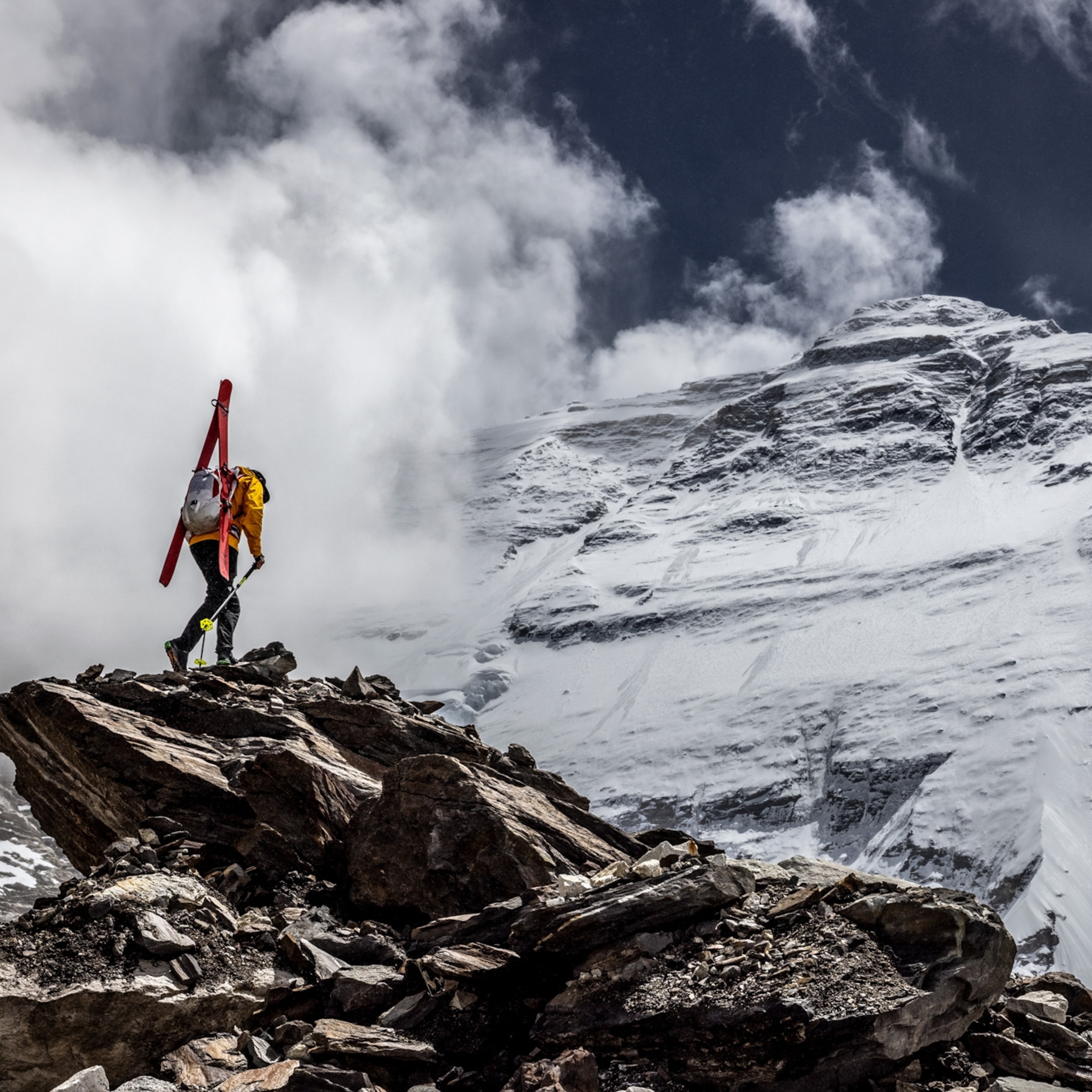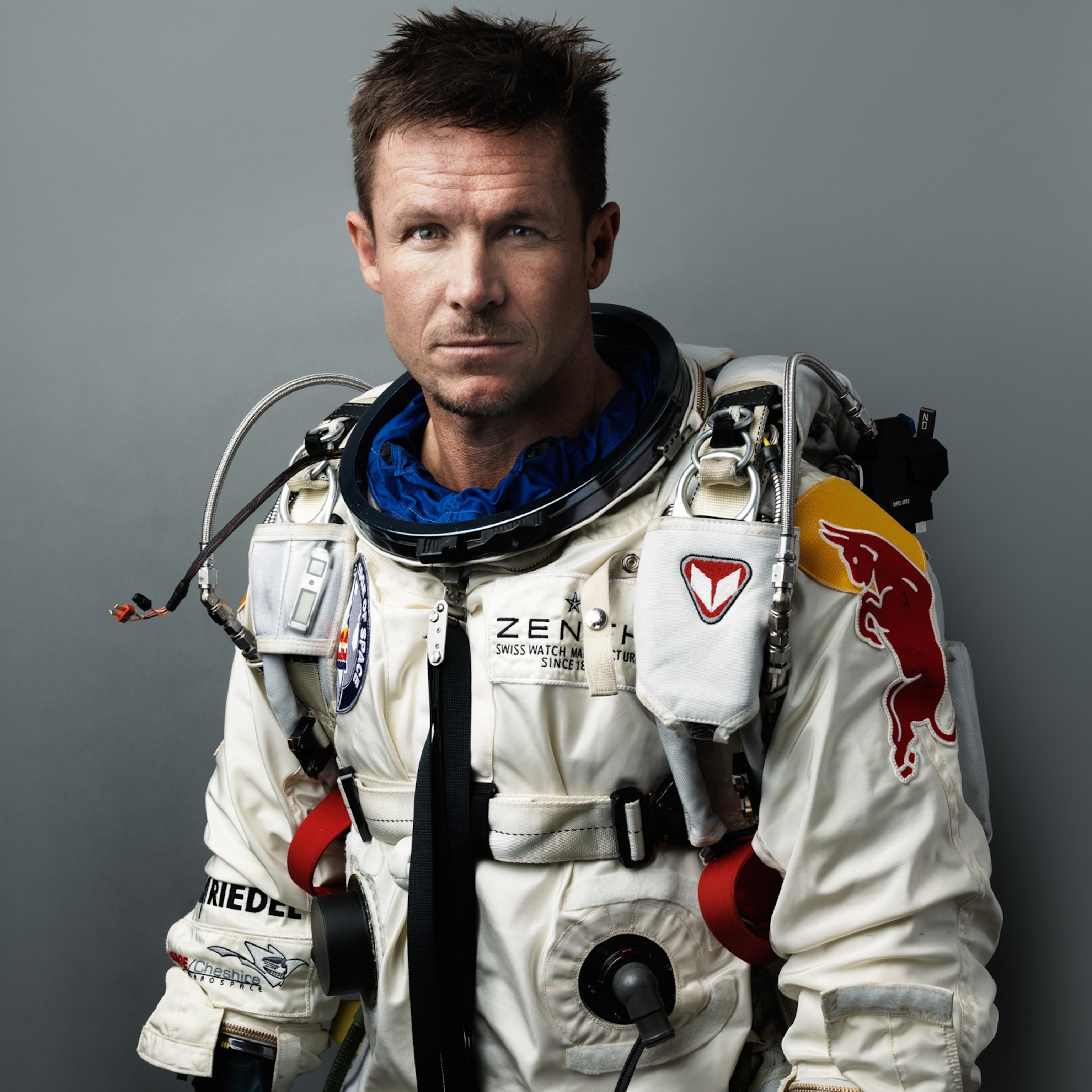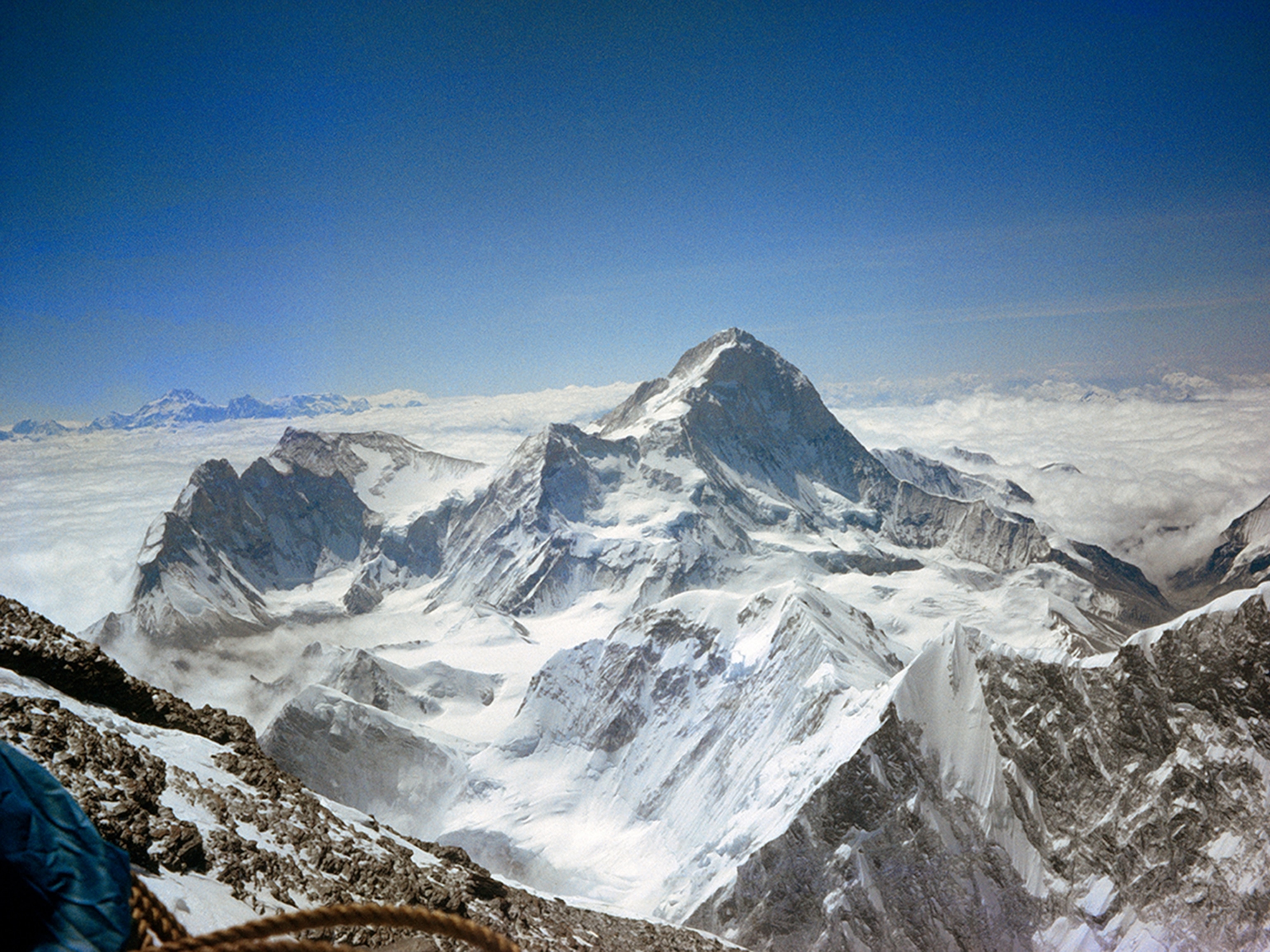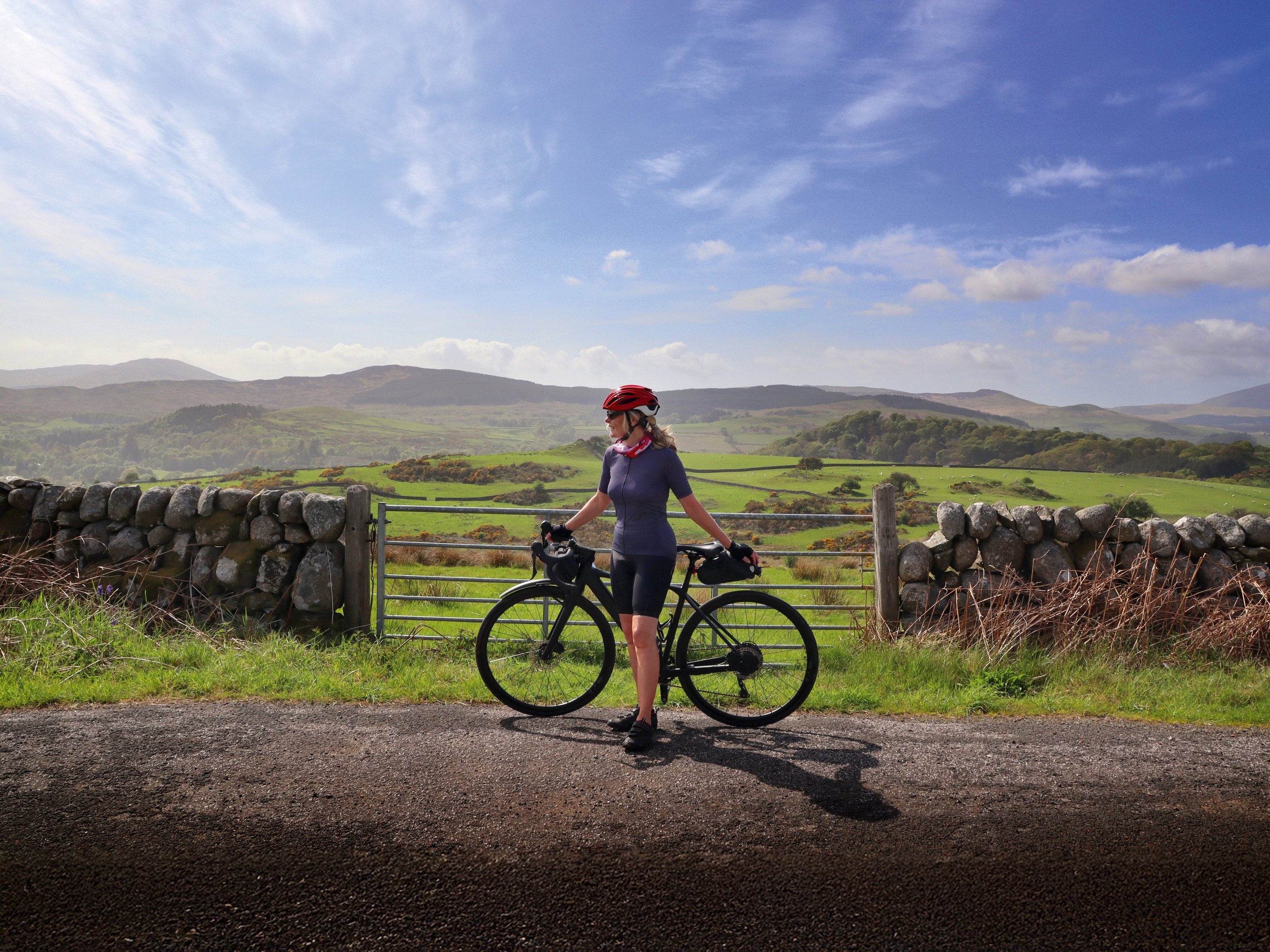
Adventure Educators Amy and Dave Freeman
A couple paddled, dogsledded, and hiked 11,647 miles across North America while 85,000 students helped shape their course.
“We were going up the Fond du Lac River in northern Saskatchewan. It was a lot of wading up rapids, dragging the canoe up, and paddling as hard as we could and only going a mile. We were like, ‘Oh, jeez, what are we doing?’” remembers adventurer Dave Freeman.
At that point, Dave, 37, and his wife, Amy, 31, still had roughly 6,000 miles and a year and a half left of their journey across North America. The pressure was on: 85,000 elementary and middle school students were eagerly tracking their progress.
On April 22—Earth Day—of 2010, the Minnesotan couple began paddling kayaks north out of Seattle. They would spend the next three years kayaking, canoeing, dogsledding, and backpacking 11,700 miles up the Inside Passage, across the Northwest Territories, through the Great Lakes, and down the East Coast of the U.S. On April 4, 2013, they tore down camp for the last time and paddled into Key West, Florida.
The “North American Odyssey,” as they dubbed the project, was the longest trip of Dave and Amy’s careers. In 2001, Dave and Eric Frost, a public school teacher, established the online Wilderness Classroom in the hopes of using wilderness and adventure as an educational tool. Schoolchildren could follow along with predesigned lesson plans and have a digital window into the expedition.
In 2006, Dave and Amy completed the 1,100-mile circumnavigation of Lake Superior via kayak. Between April 2007 and November 2008, Dave, Amy, and Frost bicycled and paddled 3,000 miles across South America through the Amazon. At the end of that trip, Frost went back into the classroom full time, though he still serves on the board for the Wilderness Classroom. Dave and Amy thought, Well, maybe we should cross North America?
“Teaching kids when they’re young that these places exist is a first stepping stone for getting people outside, understanding why these places are important, and working to protect them,” explains Dave, a biologist and anthropologist by training with 15 years of guiding experience.
Given the impracticality of flying a classroom of ten-year-olds to remote places, the Freemans went to great lengths to make the Wilderness Classroom interactive and fun. Every Monday during the trips, they used an iPhone or a satellite terminal to post a “Notes From the Trail” update. Throughout the week, they would follow up with video clips and mileage data. They would post polls, giving the students the opportunity to help them make decisions from whether Dave should shave his beard to which route they should take for a 500-mile segment of their trip. Dave ended up clean-shaven, and the couple paddled a historically significant voyageur route that went north through the Ottawa and Mattawa Rivers instead of south through Lake Ontario and Lake Erie.
“Do you remember those Choose Your Own Adventure books? It was like that, but with real people,” says Amy, a dogsled and kayak guide with a master's degree in art therapy.
The couple also made a point of interacting with the kids even more directly with in-person presentations and school assemblies. Paddling down the East Coast for the final year of the trip gave them the opportunity to visit more schools. Over the three years of the project, they met 25,000 students.
“It’s different than watching a movie. It makes it more real,” says Dave of the kids seeing the couple show up at their schools. “It makes them understand, Hey, these are real people that are doing these things—I could do that, too.”
—Fitz Cahall
THE INTERVIEW
Adventure: How did you get through the hard days? Like the one on the Fond du Lac?
Amy Freeman: When we were slogging up that river, we couldn’t really think about Key West. It would just be way too daunting. So, rather than thinking about Key West, we thought about the next set of rapids, or the next mile, or, If I make it through the next half hour, we can have a break.
Dave Freeman: And then, there were beautiful days paddling across flat lakes when you let your mind wander and think, Oh, man, pretty soon we’re going to be paddling on Lake Superior, we’re going to be paddling through New York City, past the Statue of Liberty.
A: You actually paddled past the Statue of Liberty? What was that like?
DF: We were on the water at five that morning and sped down the East River past Manhattan during morning rush hour. Paddling in the dark toward the lights of Manhattan, I remember thinking about how we couldn’t see the stars even in the middle of the night and wondering how many of the millions of people around us have never seen the Milky Way on a clear, moonless night miles from the nearest streetlight. Dodging the commuter ferries and other boats made it feel like a game of "Frogger." As we paddled past the southern tip of Manhattan, the Statue of Liberty came into view. It is a morning we will remember for a long time.
A: What were the logistics like for this trip?
- National Geographic Expeditions
DF: When we started doing this, the projects that we took on were smaller and shorter, and, slowly, they got more complex. So, it was a combination of building skills over a long time, and then we really broke it down into stages—we weren’t really thinking about the end when things got hard. We would plan six months in advance. So, while we were kayaking from Seattle up the Inside Passage, we were starting to plan the next winter when we’d be dogsledding, and then while we were dogsledding we were starting to plan paddling back to Lake Superior.
A: Did anything surprise you?
DF: We were thinking of the geography, of the physical landscape. That’s why we were going to wild places, like the Peel Watershed in the Yukon, where we wouldn’t see anyone for weeks at a time. When we got there, a lot of times the people we met—from people in urban areas along the East Coast that let us camp in their yard, to hunters that we met out hunting caribou in the middle of the Northwest Territories—became just as important. I think because what we were doing was just so unusual, people let down their guard and let us into their lives a little bit more.
A: What was it like paddling into Key West?
DF: The actual ending was a little anticlimactic. As we approached the beach at the southern tip of Key West, Amy started to cry. When I asked her why she was crying she said that it wasn’t what she expected. It was just another beach. We were landing a day earlier than planned and we even beat her parents there by 15 minutes, so there wasn’t anyone there to welcome us. It felt like any other lunch stop, except we wouldn’t be climbing back into our kayaks after lunch.
A: What is it like to be done?
AF: We really enjoyed spending a summer in Minnesota catching up with friends and family, but after a few months we are already getting a little restless and are planning a couple of projects in the coming year. I wouldn’t be surprised if we head out on another multiyear adventure in a few years. The challenges, wilderness, and people we encounter make us feel alive and hopefully our stories will inspire some kids to follow their own paths. It’s a big world; we still have a lot to learn and share.







